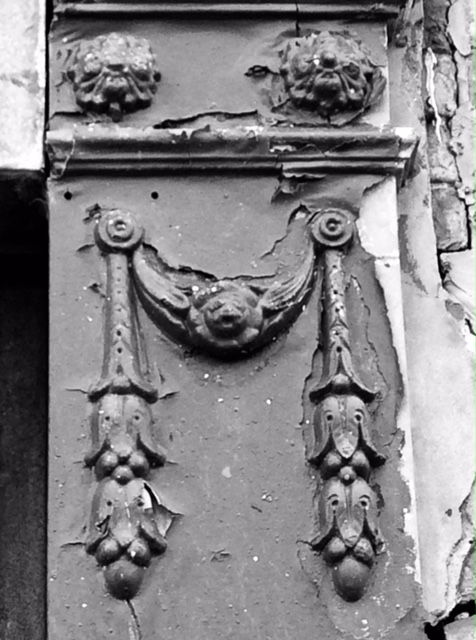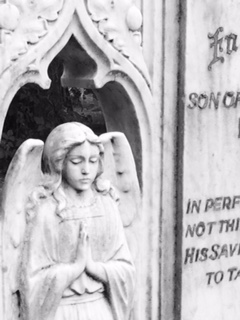Catholic Ghosts on Vauxhall Road
/By David Lewis:
Note:
Liverpool has a small old Jewish community but, as Islam and Hinduism are traditionally not strong faiths in the city, even now there are few mosques or temples. The religious landscape, fading or vigorous, is overwhelmingly Christian. Once the division between Catholic and Protestant was deep and strong. Protestant Orange Lodge marches and Catholic celebrations of St Patrick’s Day could lead to violence. Schools were segregated on sectarian lines and even the football teams were divided between Catholic Everton and Protestant Liverpool. These faultlines have largely disappeared.
The new city can pall; too much glass, too much steel, too many towers. I turned inland to hunt ghost pubs, the alcoholic ruins along Vauxhall Road, where derelict Victorian public houses stand like broken teeth in a new urban landscape. The Atholl Vaults, boarded and violated, plaster crumbling; the Castle, alive but closed; the Glasshouse on the corner of Eldon St; and wildernesses of bramble and buddleia behind faded advertising hoardings, the sites of mourned pubs like the Great Mersey, their ghosts silent.
On Eldon Street I turned to the Catholic church of Our Lady of Reconciliation. Scaffolding and tarpaulins dripped with rain and melting frost, as if the huge church had just risen from the bottom of the sea. This was a strong Irish Catholic district, fiercely political. The area returned a Nationalist MP to the British parliament for over forty years, and a store of pre-IRA weapons was found in the cellars of a local pub in the late 1800s. But I found that this pub too had been demolished, leaving only a brick scar. I thought about taking one of the old bricks, to have a small piece of Liverpool Irish Nationalist history. But why? Perhaps one day the sounds in inanimate objects will be heard; the anxious voices, the thuds and curses as the boxes of rifles were manhandled downstairs; but not in my lifetime.
From lost pubs, I began to see Catholic ghosts in road names and old churches. This was now a meander across a landscape of invisible parishes, destroyed shrines torn apart in the mechanised Reformation of the 1960s when Liverpool savagely regenerated many of the older districts. On Titchfield Street I found cobbles beneath the tarmac, stone Victorian ghosts, which took me to Trinity Catholic Primary School. A trinity of Anglican churches - St Martin’s in the Fields, St Alban’s and St Titus’s - were lost many years ago. The towers and walls of the Catholic St Sylvester’s survive, but they are embattled, razor-wired against vandals and arsonists, gradually being smothered by buddleia. St Brigid’s has suffered even more. Demolished for the Kingsway Tunnel, a slash of Brutalist concrete, it survives only as a place name behind St Sylvester’s, a clustering of Catholic names gathered as if for safe keeping.
There are deep echoes of the Reformation on these old streets. St Sylvester’s stands near Latimer Street, named after the bishop who was martyred for his Protestant faith. Catholic churches, Protestant streets. Churches stand empty, street names have lost their meanings. Nobody in Liverpool takes these divisions seriously any more, only rain-tramps like me, trudging these darkening streets; only gutter-historians, church-watchers, people who care for the memories of the city. And we do not believe, we just remember.
The people are still here, of course. Old terraced houses have gone and bungalows and semi-detached houses with gardens and driveways line the streets. Pubs and churches are the last to go, closed, abandoned to the weather, and then demolished, their love and faith dispersed, forgotten. But the people remain, living modern lives in a landscape of fading Victorian ruins, architectural, cultural, theological.
My last ghost was a church that I had watched disappear. St Gerard Majella’s was a strange brick and concrete church near Scotland Road, and I watched it’s demolition over a month or six weeks. The brick tides of the city have closed over this sunken church, and the name survives only in a street and a new courtroom. I contemplated a further walk to Cranmer Street, another martyred bishop, another faded street bookended with ghost churches; but the rain was heavier and the day was darkening. I turned towards the river, and walked slowly down to the warm shiny truths of the new city.
David Lewis has written five books of history/landscape/psychogeography about his native Liverpool and Merseyside. He posts urban/rural images on Instagram - davidlewis4168 and mutters about the world on Twitter - @dlewiswriter














